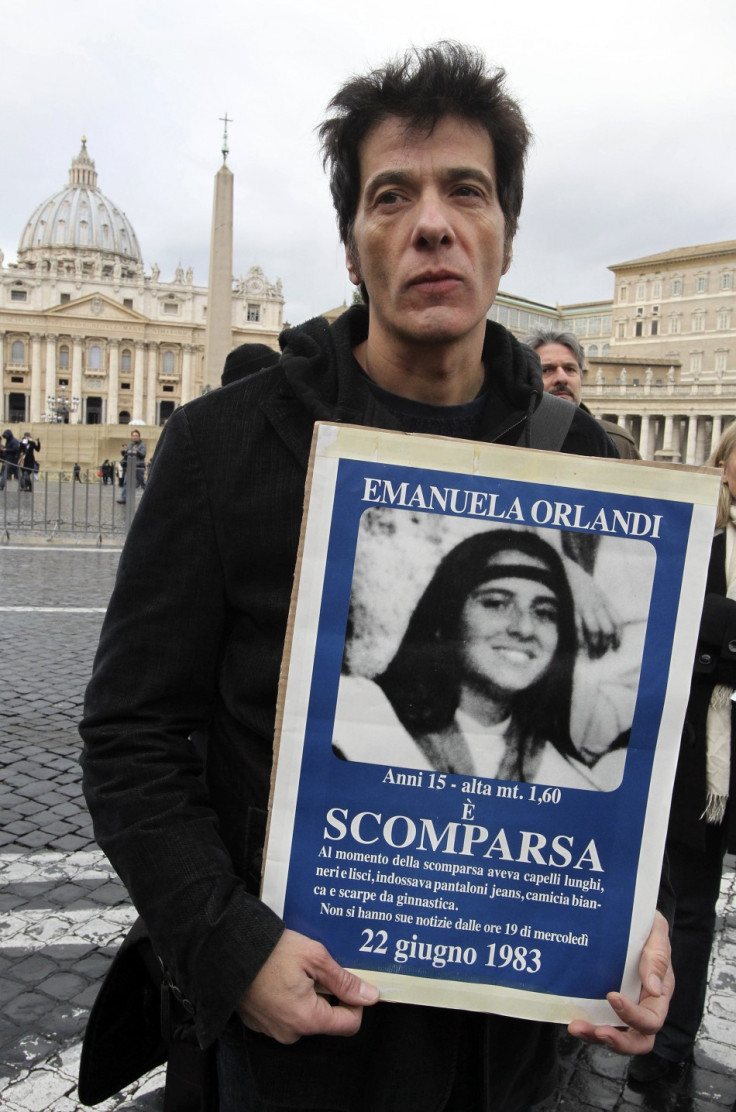Vatican spent fortune hiding missing teenage girl Emanuela Orlandi in London, leaked documents claim
Orlandi, who disappeared 1983, remains Italy's most famous missing person case.

The Vatican spent nearly 500 million lire (€258,000; £227,788) to keep one of it female citizens away from the city state, contrary to widespread beliefs that the girl was kidnapped in 1983 and later killed, according to an Italian journalist.
The claims could open a new chapter for one of Italy's most famous unresolved mysteries.
Emanuela Orlandi, a Vatican citizen, was 15 years old when she mysteriously vanished after attending a piano lesson in Rome in June 1983. Police have been trying to solve her case for decades, but her fate remains unknown.
Italian journalist Emiliano Fittipaldi has now alleged he is in possession of documents detailing how the Vatican spent more than 440 million lire to keep the girl away from the city state between 1983 and 1997.
Fittipaldi said he is in possession of, among other documents, a five-page-long letter written by Cardinal Lorenzo Antonetti, the then head of the Administration of the Patrimony of the Apostolic Headquarters (Apsa) .
The journalist claimed the letter was written in 1998 to accompany nearly 200 pages that include invoices and documents "that proved to [the Vatican's] secretary of state the costs incurred for Emanuela Orlandi between 1983 and 1997".
Large sums were spent for, among other things, the rent of a building in Chapman Road, London.
"The documents outline new scenarios on a matter people have been extensively written and speculated about," Fittipaldi wrote on La Repubblica newspaper.
"The Vatican has always denied it has more information than what has already been shared by judges who have been investigating the case for the past 34 years.
"The piece of paper I am holding is disturbing. If the document is not genuine, it means that a fabricated and devastating dossier has been making rounds for almost three years," he continued.
"If the document is real,it will open – for the first time – unthinkable and clamorous holes in one of the most obscures events of the Holy See."
The letter, published in full on La Repubblica, was addressed to monsignors Giovanni Battista Re and Jean-Louis Tauran. However, Battista Re denied he has ever seen such document.
"I have never seen that document published by Fittipaldi and I have never received any expense sheets for the Emanuela Orlandi case," he was quoted by news agency Ansa as saying.
Most of the documents are included in Fittipaldi's latest book, The Impostors, due to be published soon.
"It seems that the Vatican found the girl – kidnapped by who knows whom – and decided to transfer her to female hostels in London, " the journalist wrote on his Facebook wall.
"For 14 years it paid fees, medical expenses and transfers. At least until 1997, when the last entry [in the documents] speaks of a transfer to the Vatican and the 'completion of final procedures'."
Vatican spokesperson Greg Burke slammed the claims as "false and ridiculous".
Theories behind Orlandi's mysterious disappearance
If authentic, the documents obtained by Fittipaldi could open a new chapter on the case, which Italian magistrate decided to close last year, in spite of Orlandi family's repeated appeals.
More than thirty years after the teenage girl vanished, her case remains one of Italy's most mysterious crimes and several theories have sprung up to explain what happened to her.
The day she disappeareared, Orlandi had asked to leave the piano class early. She then called her sister Federica explaining that she had received a job offer for Avon Cosmetics. She was last seen that evening, near a BMW, from which an Avon satchel was visible.
Among other hypotheses, it is believed that Orlandi was kidnapped by people who then demanded the release of Mehmet Ali Agca, a Turkish national who had shot and wounded the then pontiff, Pope John Paul II.
Another theory sees the mob being involved with Orlandi's kidnapping.
In 2011, Antonio Mancini, the former head of the Banda Della Magliana – a now defunct Rome-based criminal organisation with links to politicians and the mafia – claimed the group had kidnapped the girl.
Mancini claimed the girl was abducted to blackmail the Vatican and ask for the restitution of large sums the Banda had invested in the Institute for the Works of Religion (Ior), commonly known as the Vatican Bank.
Orlandi's father, Ercole, used to work for the Vatican Bank.
In 2012, Italian authorities exhumed the body of Enrico De Pedis, another member of the Banda, after the gangster's former girlfriend claimed he had kidnapped the girl. She also claimed she had seen De Pedis disposing of Orlandi's body.
The same year, Italian priest and exorcist of the Diocese of Rome, GabrielePietro Amorth, claimed Orlandi had been kidnapped and forced to take part in sex parties. The late priest also claimed the girl was later killed and her body had been disposed of.
© Copyright IBTimes 2025. All rights reserved.





















